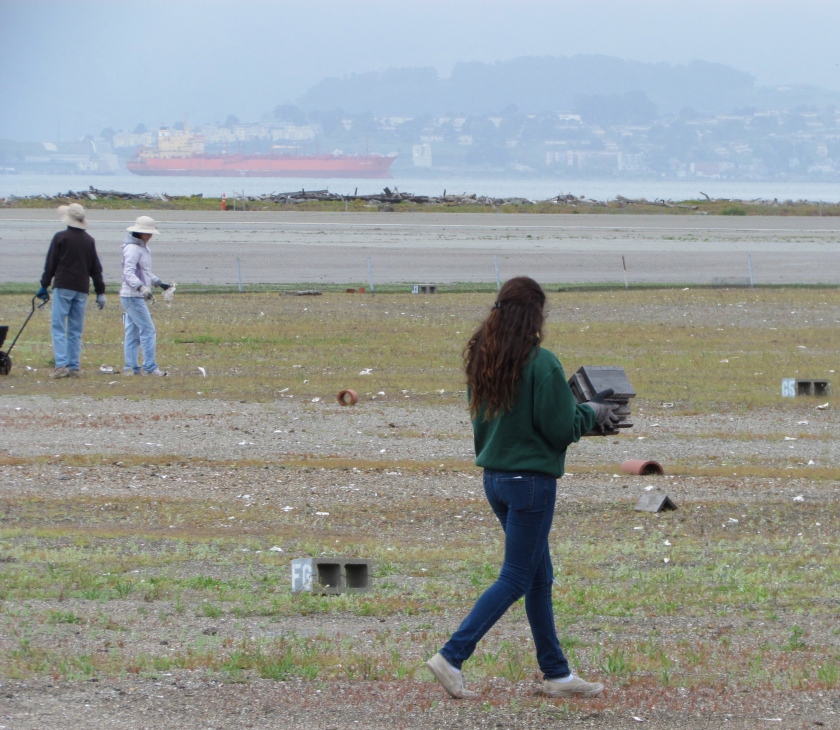The endangered least terns have returned. Committed volunteers prepare and maintain this unique site during the non-nesting season. The public can see the fruits of their work on June 15.
2013 maintenance work began on January 13th by clearing weeds from the outer perimeter of the nesting area. The terns need a clear view of their surroundings to feel comfortable that predators are not lurking nearby. Trimming vegetation near the nesting area is a high priority on work party checklists.

Volunteers were at the site again in February, March, and early April prior to the terns’ mid-April arrival. Tasks included replacing deteriorated plastic mesh along the base of the fence around the nesting site. The plastic mesh keeps chicks from wandering out through openings in the chain link fence. The chain link fence is there to keep out predators, and to keep out rabbits that might easily trample eggs.

Another of set of tasks involves randomly placing wooden A-frames and half-round clay tiles that serve as shelters for the chicks from predators like hawks. One of the senior volunteers has been working to help the terns since the base closed. This year he brought 48 wooden chick shelters that he made at his home. Another task is the distribution of oyster shells that make it harder for flying predators to distinguish where the chicks are located.

The number of volunteers ranged from 12 to as many as 30 each month. Among the volunteers this season were members of the Tau Beta Pi engineering fraternity at UC Berkeley, which has been sending volunteers for many years, and members of the Encinal High School Key Club.

Volunteers will return in September after the terns are gone. They will gather up the A-frames, clay tiles, oyster shells, and the numbered plaster markers that the US Fish & Wildlife Service uses to keep track of nesting success. Picking up the “tern furniture” allows for weed control and periodic grading of the sand and gravel.
During May, June, and July, another set of volunteers participate in the “Tern Watch Program.” Volunteers are trained in recording observations as they watch from their vehicle near the nesting site. A cinder block grid system helps in recording feeding activity, among other things. If predators are threatening the colony, the volunteers alert the Fish & Wildlife Service in the office nearby.
Volunteer opportunities:
- Tern Watch Program
- Work parties, organized by Golden Gate Audubon Society: Contact Joyce Larrick at jmlarrick@yahoo.com Next work party is the second Sunday in September.
Return of the Terns tours
On June 15th, the general public gets an opportunity to observe the nesting activity of the terns during a bus tour to the site. The tours leave from Crab Cove Visitor Center in Alameda. Registration and a fee are required. More info is on the Return of the Terns flyer.
Previous stories about the least terns:
Least terns depart – volunteers move in at Alameda Point refuge
Protecting the California Least Terns at the Alameda Point Wildlife Refuge
January – April 2013 Photo Gallery
Click on photos to enlarge and view slideshow
















